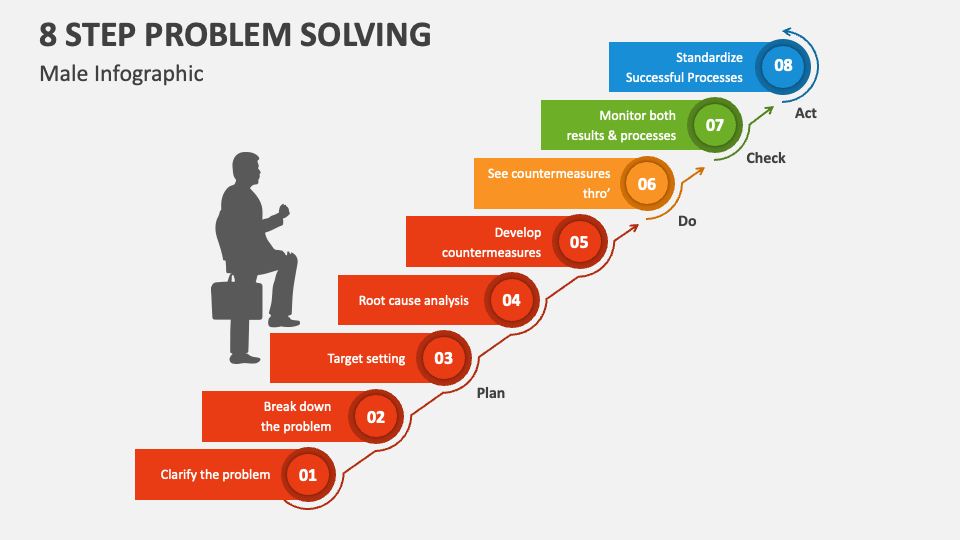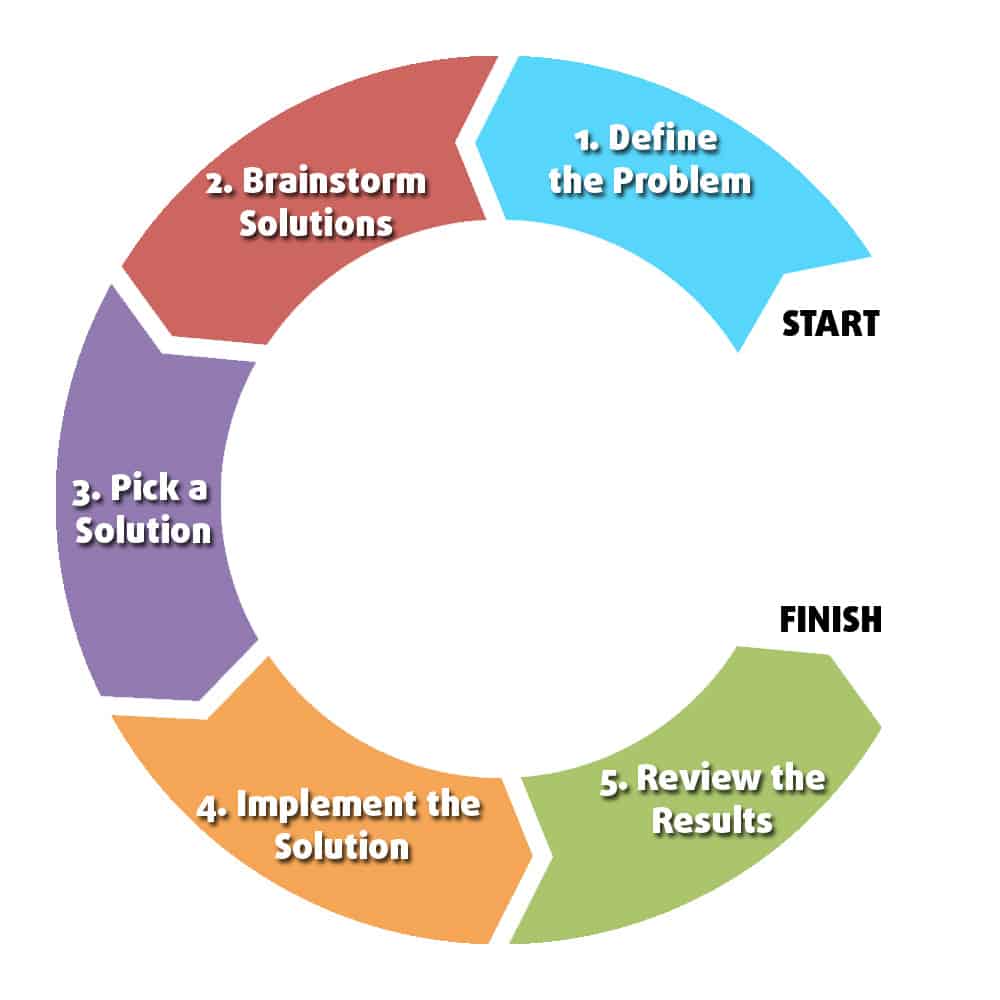The 8-Step Problem-Solving Model in Action: Case Studies – sounds kinda dry, right? But trust me, this isn’t your grandpa’s problem-solving manual. We’re diving deep into three real-world scenarios – a business challenge, a tech glitch, and a social issue – showing you exactly how this eight-step method works its magic. We’ll break down each step, compare it to other methods, and even look at where it falls short.
Get ready to level up your problem-solving game!
This isn’t just theory; we’ll dissect each case study, analyzing the decisions made and the outcomes achieved. You’ll see how adaptable this model is, tackling everything from declining sales to community conflicts. We’ll also explore its limitations and suggest tweaks to make it even better. By the end, you’ll have a solid understanding of how to apply this model to your own challenges, no matter how big or small.
Case Study 3: The 8-Step Problem-Solving Model In Action: Case Studies

This case study applies the 8-step problem-solving model to address the social issue of increasing homelessness in a specific urban area. We’ll analyze the problem, develop potential solutions, and evaluate their feasibility and effectiveness, comparing this structured approach to more ad-hoc methods often used to tackle such complex problems.
Defining the Problem: Rising Homelessness in the City Center, The 8-Step Problem-Solving Model in Action: Case Studies
The core problem is a significant rise in homelessness within the city’s central district over the past five years. This increase is attributed to a confluence of factors, including rising housing costs, stagnant wages, a lack of affordable housing options, and a decrease in social support services. The consequences include increased strain on emergency services, a deterioration of public spaces, and a heightened sense of insecurity for residents.
Developing Potential Solutions
The 8-step model guides us through the systematic development of potential solutions. Step 1 (Define the problem) has already been addressed above. Steps 2-8 will be detailed in the table below, illustrating how each step contributes to a comprehensive solution.
Resource Allocation and Expected Outcomes at Each Step
| Step | Action | Resources Needed | Expected Outcome |
|---|---|---|---|
| 2. Generate Potential Solutions | Brainstorming sessions with stakeholders (homeless individuals, city officials, community organizations, etc.), research best practices in other cities. | Meeting space, facilitators, research materials, stakeholder engagement budget. | A list of at least five potential solutions, ranging from short-term emergency measures to long-term systemic changes. |
| 3. Analyze Solutions | Evaluate each solution’s feasibility, cost-effectiveness, and potential impact using data analysis and impact assessments. | Data on homelessness trends, housing market analysis, cost-benefit analysis expertise, statistical software. | A ranked list of solutions based on feasibility and potential impact, with a clear understanding of potential trade-offs. |
| 4. Select a Solution | Choose the most promising solution based on the analysis in Step 3, considering political and social factors. | Consensus-building among stakeholders, political support. | A single, clearly defined solution ready for implementation. |
| 5. Develop an Action Plan | Artikel specific steps, timelines, and responsibilities for implementing the chosen solution. | Project management software, dedicated project manager, clear communication channels. | A detailed action plan with assigned roles and responsibilities, and a realistic timeline. |
| 6. Implement the Solution | Put the action plan into effect, securing necessary funding and resources. | Funding from government agencies or private donors, construction materials (if applicable), staff training. | Initiation of the chosen solution and observable progress towards goals. |
| 7. Monitor and Evaluate | Track progress, gather data on the solution’s impact, and identify any unexpected consequences. | Data collection tools, regular progress reports, evaluation metrics. | Data on the solution’s effectiveness, areas for improvement, and any unintended negative consequences. |
| 8. Refine and Improve | Adjust the solution based on the monitoring and evaluation data, ensuring ongoing effectiveness. | Flexibility in the budget and action plan, willingness to adapt strategies based on data. | A refined solution with improved effectiveness and sustainability. |
Comparison with Other Approaches
The 8-step model offers a structured, data-driven approach compared to more reactive or ad-hoc methods. For instance, simply providing temporary shelter without addressing the underlying causes of homelessness (lack of affordable housing, job training, etc.) would be a less effective, short-sighted approach. The model’s emphasis on systematic analysis and ongoing evaluation ensures a more sustainable and impactful solution. A reactive approach might involve simply addressing immediate needs without a long-term strategy, potentially leading to recurring issues.
Illustrative Examples

Okay, so we’ve covered the 8-Step Problem-Solving Model, and even tackled Case Study 3. Now let’s look at some real-world examples to see how this model plays out, both when it works like a charm and when it needs a little tweaking. We’ll see how visualizing the model helps in understanding its application.The 8-Step Problem-Solving Model’s effectiveness hinges on its structured approach.
By systematically addressing each step, we can better understand the problem’s complexity and develop targeted solutions. Visualizing this process, perhaps with a flowchart or a simple diagram, can be incredibly helpful, especially in complex situations involving multiple stakeholders.
Successful Application: Streamlining a University’s Admissions Process
Imagine a university struggling with an inefficient admissions process. Applications were piling up, processing times were slow, and student dissatisfaction was growing. Using the 8-Step model, the university tackled this problem:
1. Define the Problem
The problem was clearly defined as excessively long processing times for applications, leading to delays in admissions decisions and negative student experiences.
2. Gather Information
Data was collected on application processing times, bottlenecks in the system, and student feedback.
3. Analyze the Information
The analysis revealed that the primary bottlenecks were in the verification of academic transcripts and the manual input of application data.
4. Develop Solutions
Several solutions were proposed: automating transcript verification, implementing an online application portal with integrated data entry, and hiring additional temporary staff.
5. Select the Best Solution
A cost-benefit analysis showed that automating transcript verification and implementing the online portal offered the best return on investment.
6. Implement the Solution
The university invested in new software and trained staff on its use.
7. Evaluate the Results
After implementation, processing times decreased significantly, student satisfaction increased, and the overall efficiency of the admissions process improved dramatically.
8. Communicate the Results
The successful implementation was communicated to all stakeholders, including students, faculty, and staff. The university also documented the process for future reference.
Limitations and Adaptation: A Marketing Campaign Hiccup
Let’s say a company launched a new marketing campaign with the goal of increasing brand awareness. They used the 8-Step model, but encountered some unexpected hurdles.
1. Define the Problem
The initial problem was defined as low brand awareness among the target demographic.
2. Gather Information
Market research indicated a preference for different advertising channels than initially planned.
3. Analyze the Information
The analysis showed that the chosen advertising channels were ineffective for reaching the target demographic. The initial strategy underestimated the influence of social media influencers.
4. Develop Solutions
Solutions included shifting ad spend to more effective channels, incorporating influencer marketing, and refining the campaign messaging.
5. Select the Best Solution
A combination of influencer marketing and reallocating ad spend to social media platforms was selected.
6. Implement the Solution
The campaign was adapted to include influencer collaborations and targeted social media ads.
7. Evaluate the Results
While the overall campaign didn’t meet the initial goals, the adapted strategy showed some positive results. The key learning was that initial market research needed more in-depth analysis.
8. Communicate the Results
The company openly communicated both the initial setbacks and the successful adaptation of the strategy, highlighting the importance of continuous monitoring and adjustment. This allowed for learning and improvement in future campaigns. The model was adapted by emphasizing iterative improvements and more frequent evaluation cycles.
So, there you have it – the 8-step problem-solving model in action. We’ve journeyed through diverse case studies, highlighting its versatility and power. While it’s not a silver bullet, understanding its strengths and weaknesses equips you to tackle complex problems with confidence. Remember, the key is adaptability; tweak the model to fit the situation, and you’ll be well on your way to becoming a problem-solving ninja.
Now go forth and conquer!
Common Queries
What if the 8-step model doesn’t fit my problem perfectly?
Don’t sweat it! The model is a framework, not a rigid rulebook. Adapt it to your specific needs. Maybe you need to add steps or combine some.
How long does it typically take to implement the 8-step model?
That depends entirely on the complexity of the problem. Simple issues might take a few hours, while more complex ones could take days or even weeks.
Is this model suitable for personal problems, too?
Absolutely! While the examples focus on professional and social contexts, the principles apply equally well to personal challenges. Think of it as a structured approach to self-improvement.
Are there any software tools that can help with this model?
While there isn’t a specific software
-for* the 8-step model, project management tools like Trello or Asana can help you track progress and collaborate on solutions.
